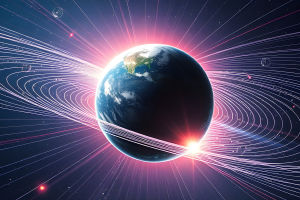Have you ever been surprised by a sudden shift in the weather and found yourself wondering what caused it? One of the main forces behind these quick changes is the jet stream—a powerful, fast-moving ribbon of air high above the Earth's surface.
This atmospheric current plays a crucial role in shaping the weather we experience, influencing everything from temperature drops to storms. Let’s take a deeper dive into how jet streams work and why they have such a significant impact on our day-to-day weather patterns.
What Is a Jet Stream?
Jet streams are narrow bands of strong wind that flow high above the Earth, usually between 6 to 12 kilometers above the surface. They can reach speeds over 300 kilometers per hour. These powerful winds move from west to east and help guide weather systems around the globe.
There are different jet streams, but the most famous ones are the polar jet stream and the subtropical jet stream, each found at different latitudes.
How Jet Streams Form
Jet streams form because of temperature differences between the Earth's poles and the equator. Warm air near the equator rises, and cold air near the poles sinks. This creates pressure differences, which cause air to move quickly along narrow paths in the upper atmosphere—the jet streams.
Their speed and position change with the seasons, and this movement directly impacts weather patterns below.
Jet Streams and Weather Patterns
Jet streams act like rivers of air that steer weather systems, including storms and high-pressure areas. When the jet stream moves north or south, it can bring cold or warm air to different regions.
For example, if the jet stream dips south, it can pull cold air down, causing colder weather and sometimes snow. When it moves north, warmer air can move in, leading to milder temperatures.
Influence on Storms and Rainfall
Storms often develop along the edges of jet streams where air masses with different temperatures meet. The jet stream can strengthen storms by increasing wind speeds and helping lift warm air upward, which encourages cloud and rain formation.
This is why changes in the jet stream's path can lead to heavy rain, snow, or dry spells in certain areas.
Jet Stream and Climate Variability
The jet stream also plays a role in longer-term climate events. Changes in its position and strength are linked to patterns like El Niño and La Niña, which affect weather worldwide.
Scientists study jet streams carefully to better predict seasonal weather changes and improve forecasts for extreme events.
Human Activities and Jet Streams
There is ongoing research about how human-caused climate change affects jet streams. Some studies suggest that warming in the Arctic reduces the temperature difference between the poles and the equator, potentially weakening the jet stream.
A weaker jet stream may lead to more unpredictable weather, with longer periods of heatwaves, cold snaps, or storms.
Why Should We Care?
Understanding jet streams helps us prepare for weather changes. Accurate forecasts protect lives, crops, and property by warning about storms and unusual weather patterns in advance.
From planning daily activities to managing agriculture and disaster response, jet streams are an important factor in our daily lives.
Final Thoughts: The Invisible Weather Driver
Jet streams may be high above us and invisible, but their influence on weather is very real. Next time you check the forecast and hear about shifting winds or storms, remember the jet stream is often behind those changes.


